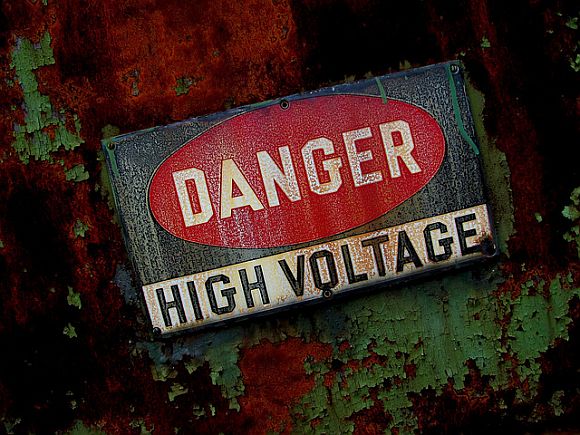
When working with electricity, caution is imperative. It’s ideal to turn off the power source at the breaker box, if applicable, so you can ensure that no lingering electricity can harm you during a project.
Two factors to consider with electricity are voltage, the rate at which energy is drawn from a source that produces a flow of electricity in a circuit; expressed in volts; and amperage, the strength of an electrical current measured in amperes.
Which is the most dangerous component of the two?
Our friends at One Project Closer have a great explanation on voltage vs. amperage. The author of the post, Fred, likens electricity to a flowing river:
“If an electrical circuit is a river, voltage is the steepness of the river, while amperage is the amount of water that flows across a section of the river for some set period of time.”
Fred admits the analogy isn’t perfect, but it does make sense. If you have high voltage and low amperage, then you’d have what could be compared to a “thin waterfall.” Reverse that with low voltage and high amperage, and you’d have a slowly flowing, wide river. Neither would be expected to bring you much harm.
High voltage and high amperage together, however, can have a devastating effect. Fred also points out that, according to Ohm’s law, the amount of current that passes through your body is directly proportional to the voltage. Currents of 6 miliamps are enough to cause serious pain, while those of 100 miliamps would likely cause heart fibrillation.
That concludes today’s science lesson! If you find yourself working with electricity, it’s always a good idea to pick up a voltmeter, which allows you to see if any electricity remains in an appliance, outlet or wires so that you can safely proceed with a project.
Photo: Flickr.com/rhysasplundh


No Comments